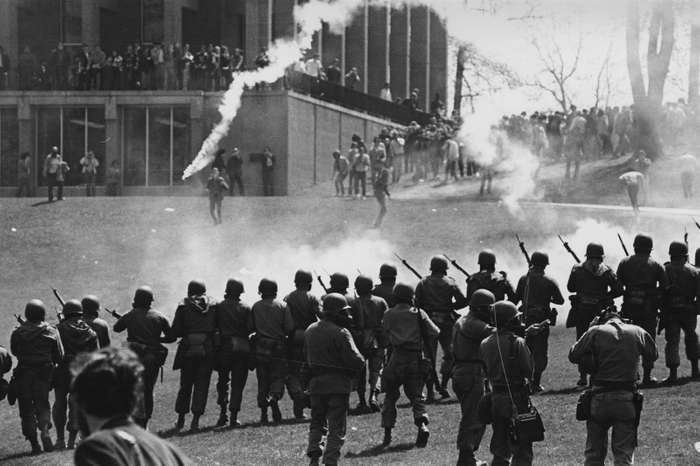The Song that Ended a War: Kent State at 50

What if you knew her and found her dead on the ground? That was Neil Young’s compelling lyrical question about Allison Krause, one of four Kent State University students gunned down by the Ohio National Guard 50 years ago on May 4, 1970. The clash inspired an iconic photograph and a memorable protest song that energized a nation weary of conflict in Southeast Asia.
Young immediately wrote his edgy protest song “Ohio” after seeing published photos of the shootings. It was a rush job, recorded on May 21 by Crosby, Stills, Nash & Young and released in June by the Atlantic label—unusual for a band with another new record already charting (“Teach Your Children”). But the timing was right: “Ohio” gripped a movement and wouldn’t let go.
On April 30, 1970, President Nixon surprised America by announcing an invasion of Cambodia to escalate the Vietnam conflict. That prompted weekend demonstrations and civil unrest at Kent, Ohio, and the campus ROTC building was set on fire. Martial law was declared at 9:00AM on Monday, May 4, overriding speech and assembly rights just as 100 National Guard troops were assigned to control and disburse demonstrating crowds, a reported 1,000 student protestors and up to 2,500 onlookers. After a campus skirmish of shouting, rock throwing and tear gas, the students were finally disbursing as the soldiers retreated up a small hill. Then 28 of them spun around, kneeled or stood in formation, and opened fire back downhill toward the crowds. There were 67 shots fired over 13 seconds leaving four students dead and nine more injured. Two of them, Jeffrey Miller and Allison Krause, were protestors, the other two were bystanders. At first there were lies: a sniper had been shooting at them. No, there was no sniper. Just a fragile, volatile situation.
John Filo, a 20-year-old journalism student with a camera, was at the melee and quickly blew through a full roll of film. Then he saw a female onlooker run to the aid of Jeffrey Miller, lying lifeless on the ground. Filo used his next to last frame to capture her sudden screams and anguish as she knelt. The snapshot of Mary Ann Vecchio’s rage ran in NewsweekMagazine, won the Pulitzer Prize, and become one of the great all-time photos of the era. The picture was seen by millions, surely including rocker Young. Right after the shootings, four million students went on strike, many universities were closed, and Young began to write.
The song itself was brilliantly conceived as a haunting angry outcry with a deliberate military cadence, discordant drop-D tuning, and damning lyrics (“tin soldiers and Nixon coming”). It is considered one of the best and most effective protest songs ever written. “Ohio” is in the Grammy Hall of Fame and was named by Rolling Stone as one of the greatest songs of all time. It also strengthened public disdain and opposition to the war with a strident message we can still hear.
